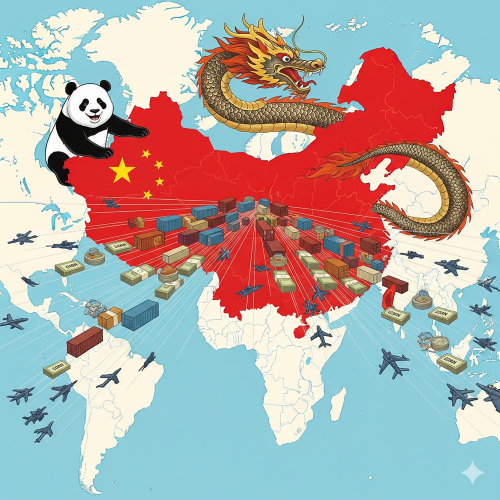What role do Chinese infrastructure projects (ports, railways, highways) play in tying South America closer to Beijing?

Chinese infrastructure projects play a crucial role in tying South America closer to Beijing by creating a logistical network that facilitates the direct flow of raw materials to China while solidifying Beijing's economic and political influence.
This strategy bypasses traditional trade routes and Western-controlled infrastructure, reshaping the economic geography of the region.
Creating a Direct Pacific-to-Asia Trade Route
China's most impactful infrastructure projects in South America are strategically located to create a direct trade corridor from the resource-rich continent to Asia. This is a core tenet of China's Belt and Road Initiative (BRI), which aims to reduce reliance on U.S.-controlled shipping lanes and logistics.
-
The Chancay Megaport in Peru: This is a flagship project that embodies this strategy. Operated and majority-owned by a Chinese state-owned enterprise, this deep-water port on the Pacific coast is designed to handle the world's largest container ships. It will serve as a direct gateway for South American exports to China, significantly reducing shipping times by bypassing traditional routes through the Panama Canal or U.S. West Coast ports. The port is set to be a key hub for exports of copper, lithium, and agricultural goods from Peru, Brazil, and other neighboring countries.
-
Transcontinental Railways: China is also pushing for a transcontinental railway to connect the Atlantic coast of Brazil with the Pacific coast of Peru, with a planned route passing through Bolivia. This massive project, if completed, would create a direct land bridge for Brazilian soybeans and other commodities to reach the Pacific, from where they can be shipped directly to China. This would further reduce South America's reliance on U.S.-controlled routes and strengthen the economic link to Beijing.
This integrated network of ports and railways ensures that the vast natural resources of South America can be transported efficiently and exclusively to China, making the region's economies structurally dependent on Beijing's demand.
The "Resources-for-Infrastructure" Model
A key mechanism through which these projects tie countries closer to China is the "resources-for-infrastructure" model. Under this approach, Chinese state-owned banks extend large loans to South American governments for infrastructure projects. These loans are often collateralized by future revenues from the country's resource exports, which are shipped to China.
This model serves two purposes:
-
Securing Resources: It guarantees China a long-term, stable supply of the raw materials it needs to fuel its economy, such as copper from Chile and Peru, iron ore from Brazil, and soybeans from Brazil and Argentina.
-
Creating Debt Dependency: The massive loans associated with these projects can create significant debt burdens for South American nations. While China has shown a willingness to renegotiate debt, this financial leverage gives Beijing considerable influence over the political and economic decisions of the debtor nations.
This model is particularly attractive to countries that may not meet the strict financial and governance requirements of Western institutions like the World Bank or IMF.
Dual-Use Capabilities and Geopolitical Influence
Beyond their economic function, these infrastructure projects have significant geopolitical implications that tie South America closer to China's strategic interests.
-
Dual-Use Ports: The U.S. government has expressed concern that Chinese-built ports, while commercially operated, have dual-use capabilities that could be leveraged by the Chinese navy for military purposes. These ports could provide a logistical base for naval vessels, allowing the People's Liberation Army Navy (PLAN) to extend its power projection into the Western Hemisphere.
-
Political Influence: By becoming the primary builder of critical national infrastructure, Chinese firms gain significant political influence. This gives Beijing a seat at the table in national policy decisions and allows it to shape development priorities in a way that benefits its own long-term interests.
In essence, these infrastructure projects act as a physical and economic anchor, solidifying China's presence in South America and making its ties with the region increasingly difficult to sever.
- Questions and Answers
- Opinion
- Motivational and Inspiring Story
- Technology
- Live and Let live
- Focus
- Geopolitics
- Military-Arms/Equipment
- Güvenlik
- Economy
- Beasts of Nations
- Machine Tools-The “Mother Industry”
- Art
- Causes
- Crafts
- Dance
- Drinks
- Film/Movie
- Fitness
- Food
- Oyunlar
- Gardening
- Health
- Home
- Literature
- Music
- Networking
- Other
- Party
- Religion
- Shopping
- Sports
- Theater
- Health and Wellness
- News
- Culture

